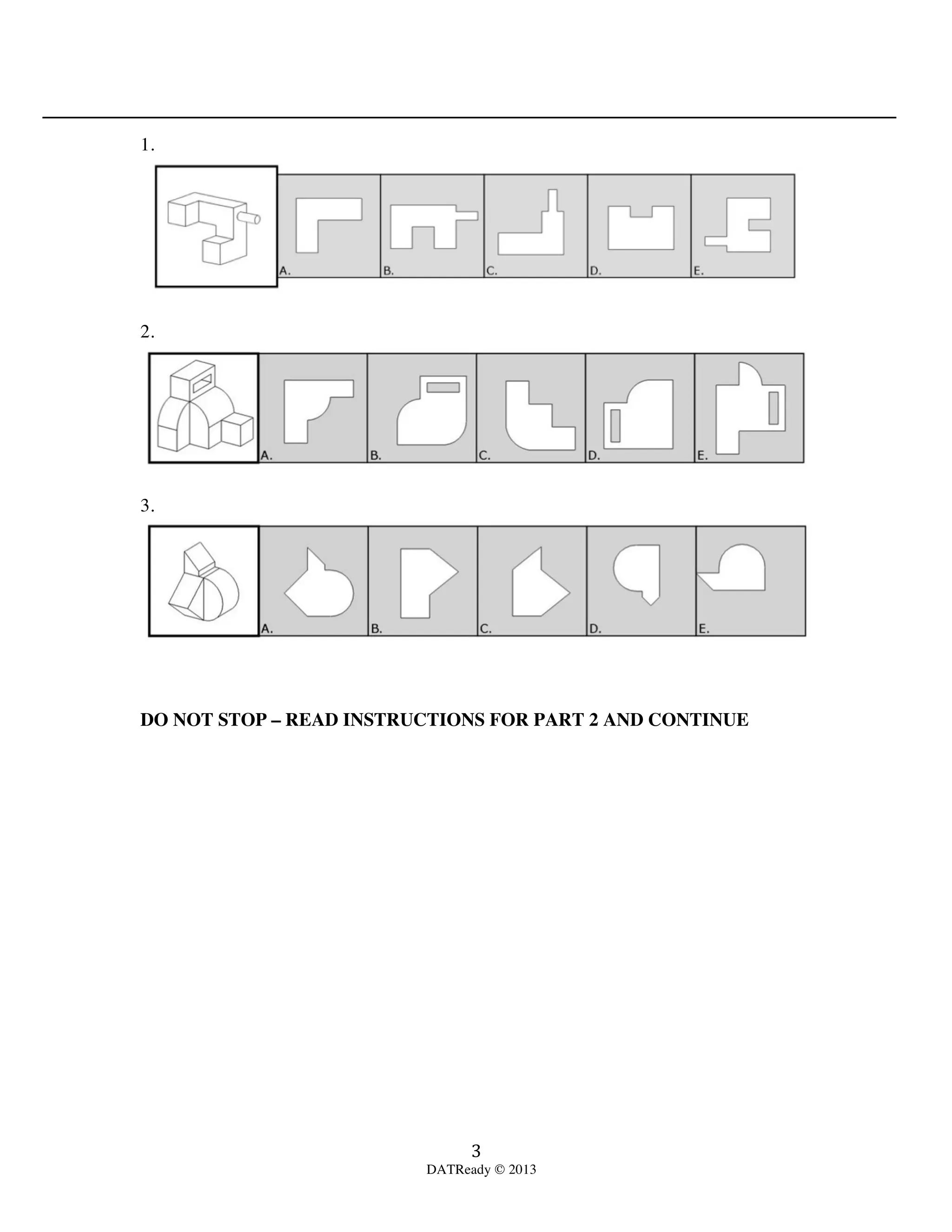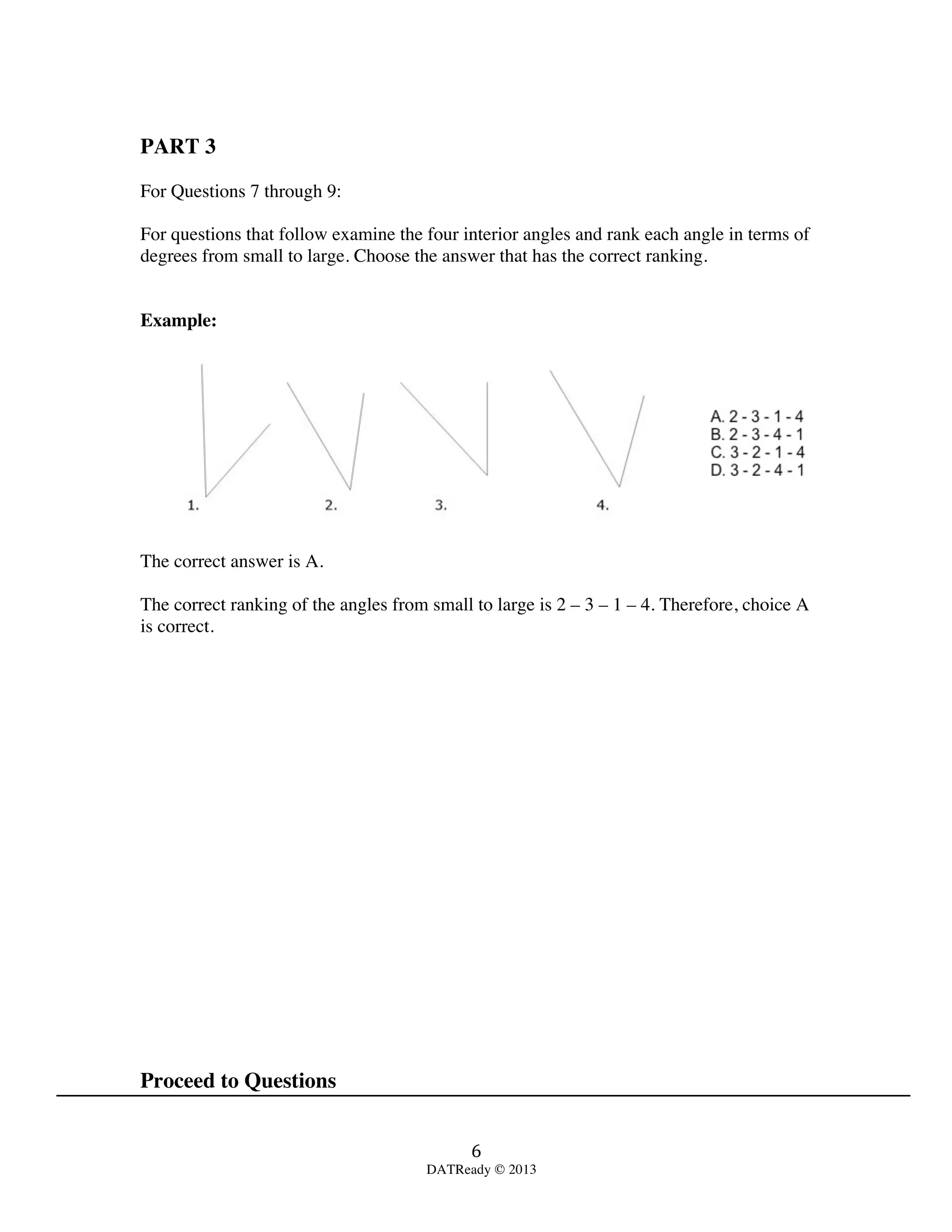The document outlines a sample Canadian DAT perceptual ability test consisting of six parts, each with different tasks related to visual-spatial skills. Participants are required to identify correct apertures for 3D objects, complete views of solid objects, rank angles, mentally unfold paper with holes, analyze painted cubes, and fold flat patterns into 3D figures. An answer key is provided at the end for all questions.













